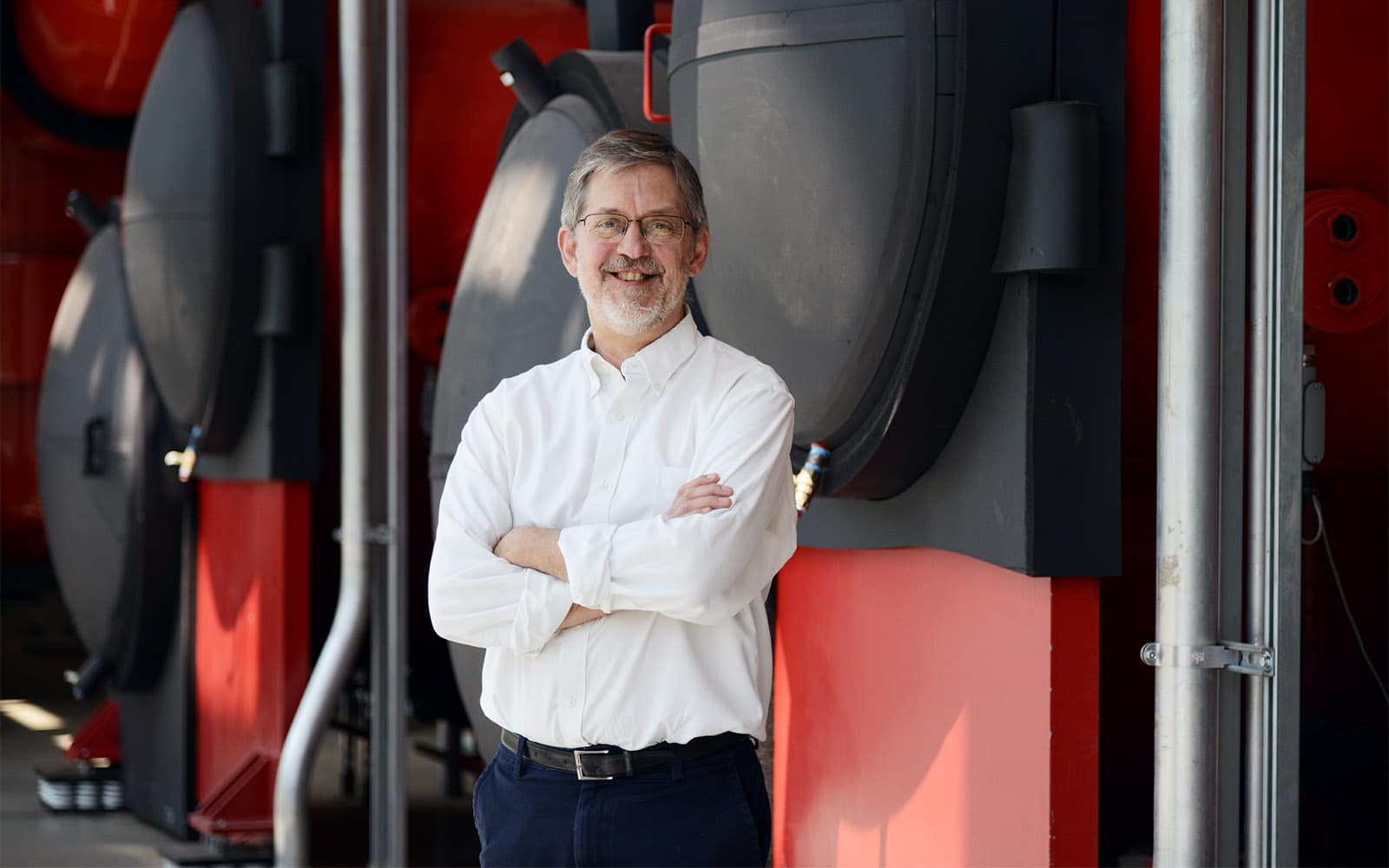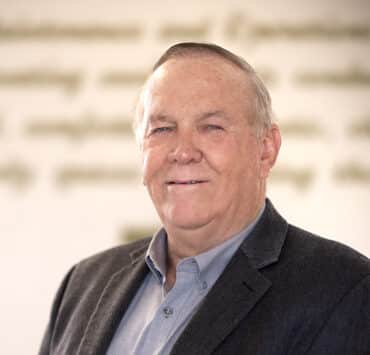|
Getting your Trinity Audio player ready...
|
After spending the first decade of his career working in coal-fired and nuclear power plants as an engineer, Edward “Ted” Borer was forever changed.
“Picture yourself working in a 11-story high coal-fired power plant. That’s enormous,” he says. “Your hands are constantly covered in dust and you’re constantly breathing that. There’s this physical manifestation of ‘that’s got to be in the air.’”
That exposure sparked Borer’s commitment to making sustainable choices in his own life. He rode his bike to work. He and his wife bought a home near one of the largest community supported agriculture farms in the country. They maintained a garden, installed solar hot water and solar photovoltaic panels on the roof, and converted their house from oil to heat pumps. Today, they take pride in motivating their kids to implement energy and environmental stewardship changes of their own.

“We absolutely live this stuff both by the way we commute [by bicycle] and where we put our money,” he explains. “It’s super gratifying to help my kids take some of those steps even if it’s just showing them that they can get anywhere they want with their own strength, energy, and with very little money.”
Borer’s commitment to sustainable living is fitting for a leader involved in guiding Princeton University’s journey to net-zero carbon emissions by 2046. A key part of that plan has been transforming how the university gets its energy. Instead of burning fossil fuels to keep buildings at comfortable temperatures, the university is increasingly relying on a geo-exchange and heat pump system. Geo-exchange uses the ground as a renewable heat source in winter and heat sink in summer. While a conventional furnace burns a fossil fuel to produce heat, a geo-exchange and heat pump system transfers heat from one place to another and will allow the university to phase out nonrenewable energy sources.
Criteria that Guides Princeton’s Greenhouse Gas Reduction Decisions
Adopt a self-imposed greenhouse gas emissions budget of approximately 1,750,000 tons of CO2e, representing the total net emissions that are allowed from on-campus (scope 1 and 2) operations from now into the indefinite future
Steady reductions in annual greenhouse gas emissions between now and 2046 should occur, though the actual reduction curve may not be linear
All projects should answer the question, “Will today’s decision facilitate a movement towards the objective of global decarbonization?”
Maintain the rationale that paying others so we can continue to pollute is not an effective global solution to climate change
Princeton’s facilities engineering team where Borer is the energy plant director has installed a system of 1,000 pipes that are 70 stories deep and 2 thermal energy storage tanks, and he constructed a heat pump facility to expand the university’s capacity to deliver thermal energy. While the geo-exchange and heat pump system hasn’t been in place to see a full summer or winter, Borer’s team has been actively monitoring its performance for over eight months. So far, they’re already getting indications that the system will be a game changer.
“We’re not just advanced in what we’re using but it’s how we’re using it. Our system shows us how our equipment is performing, the price of electricity, the price of fuel, and other metrics,” he says. “We can make very nuanced economic and environmental-dispatch decisions with the systems we’re building. That’s one of the most sophisticated parts about what we’ve done.”
The implementation of geo-exchange wells and heat pumps is one of several action items Borer and his colleagues are focused on to bring the university closer to its goal. Other directives include investing hundreds of millions of dollars. These include energy-efficiency improvements in existing buildings, expanding solar power generation on campus, investigating long-term fuel alternatives, and more.

As a leader, Borer believes that he can learn something from anyone on his team.
“Everyone has something to teach me,” he says. “If I listen carefully, I’ll find out something cool or helpful to me. This is true of every person in the university from the person welding pipes outdoors to the one working in the energy plant control room to the top people in the administration. I try to approach my staff by saying, ‘You tell me what’s going on. What problems do you see?’”
While Princeton has been at the cutting-edge of sustainability solutions, Borer acknowledges that other leaders in positions like his aren’t always as fortunate in advancing projects.
“These are thorny technical problems, but it seems that for some, getting permission is the hardest part. Going through the exercise of how much it’s going to cost and how we justify these changes can be challenging. A lot of institutions don’t know how to approach it or feel like they can’t get the buy-in.”
Edward “Ted” Borer
“We absolutely live [sustainability] both by the way we commute [by bicycle] and where we put our money.”
College campuses in the US have made strides in reducing their greenhouse gas emissions. Between 2005 and 2014, they reduced emissions by more than 6 percent with many institutions in the coastal Northeast region averaging a reduction of more than 16 percent. However, Borer has words of encouragement for individuals who are still early mapping out their journey to carbon neutrality.
“Look at other institutions that have done it,” he advises. “If you acknowledge that climate change is real and you want to have a future, you need to get started on this stuff. And, with long-term thinking, you can do it with life cycle savings.”
Through his work at Princeton, Borer is not just reducing emissions—he’s setting a new standard for sustainable campus operations nationwide.
The Whiting-Turner Contracting Company provides construction management, general contracting, design-build, and integrated project delivery services on projects small and large for a diverse group of customers. We constantly strive to exceed each client’s expectations through innovation, collaboration, and best practices. With over 60 locations nationwide, Whiting-Turner has a strong presence throughout the country. More importantly, we recognize the value in community involvement and the benefits of strong local subcontractor relationships. We pride ourselves on familiarity with our local communities and our ability to give our clients the attention of a small business with the resources of national corporation.


